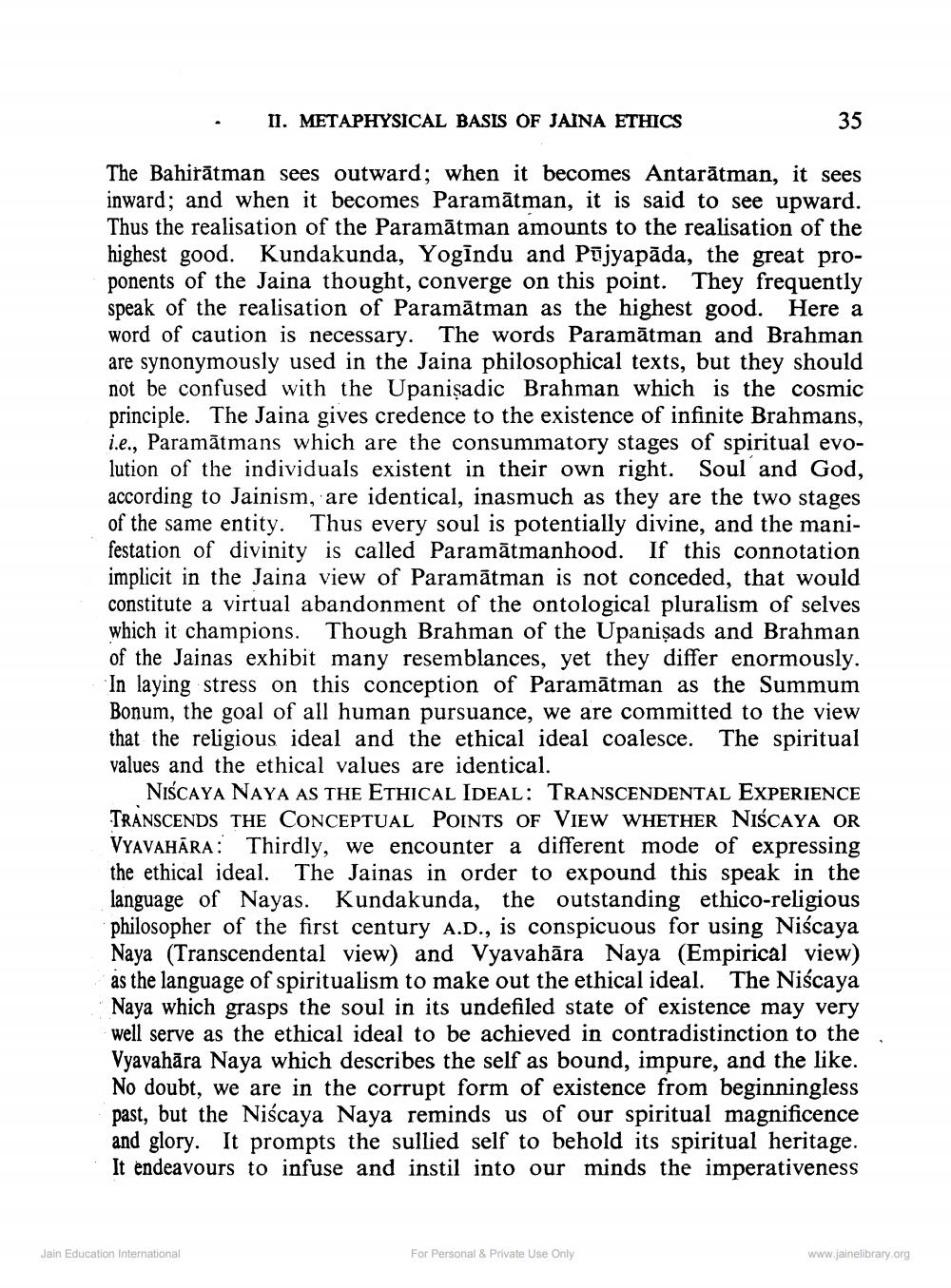________________
II. METAPHYSICAL BASIS OF JAINA ETHICS
The Bahiratman sees outward; when it becomes Antarātman, it sees inward; and when it becomes Paramātman, it is said to see upward. Thus the realisation of the Paramātman amounts to the realisation of the highest good. Kundakunda, Yogindu and Pujyapada, the great proponents of the Jaina thought, converge on this point. They frequently speak of the realisation of Paramātman as the highest good. Here a word of caution is necessary. The words Paramātman and Brahman are synonymously used in the Jaina philosophical texts, but they should not be confused with the Upanisadic Brahman which is the cosmic principle. The Jaina gives credence to the existence of infinite Brahmans, i.e., Paramātmans which are the consummatory stages of spiritual evolution of the individuals existent in their own right. Soul and God, according to Jainism, are identical, inasmuch as they are the two stages of the same entity. Thus every soul is potentially divine, and the manifestation of divinity is called Paramatmanhood. If this connotation implicit in the Jaina view of Paramātman is not conceded, that would constitute a virtual abandonment of the ontological pluralism of selves which it champions. Though Brahman of the Upanisads and Brahman of the Jainas exhibit many resemblances, yet they differ enormously. In laying stress on this conception of Paramatman as the Summum Bonum, the goal of all human pursuance, we are committed to the view that the religious ideal and the ethical ideal coalesce. The spiritual values and the ethical values are identical.
Jain Education International
35
NISCAYA NAYA AS THE ETHICAL IDEAL: TRANSCENDENTAL EXPERIENCE TRANSCENDS THE CONCEPTUAL POINTS OF VIEW WHETHER NISCAYA OR VYAVAHARA: Thirdly, we encounter a different mode of expressing the ethical ideal. The Jainas in order to expound this speak in the language of Nayas. Kundakunda, the outstanding ethico-religious philosopher of the first century A.D., is conspicuous for using Niścaya Naya (Transcendental view) and Vyavahāra Naya (Empirical view) as the language of spiritualism to make out the ethical ideal. The Niścaya Naya which grasps the soul in its undefiled state of existence may very well serve as the ethical ideal to be achieved in contradistinction to the Vyavahāra Naya which describes the self as bound, impure, and the like. No doubt, we are in the corrupt form of existence from beginningless past, but the Niścaya Naya reminds us of our spiritual magnificence and glory. It prompts the sullied self to behold its spiritual heritage. It endeavours to infuse and instil into our minds the imperativeness
For Personal & Private Use Only
www.jainelibrary.org




